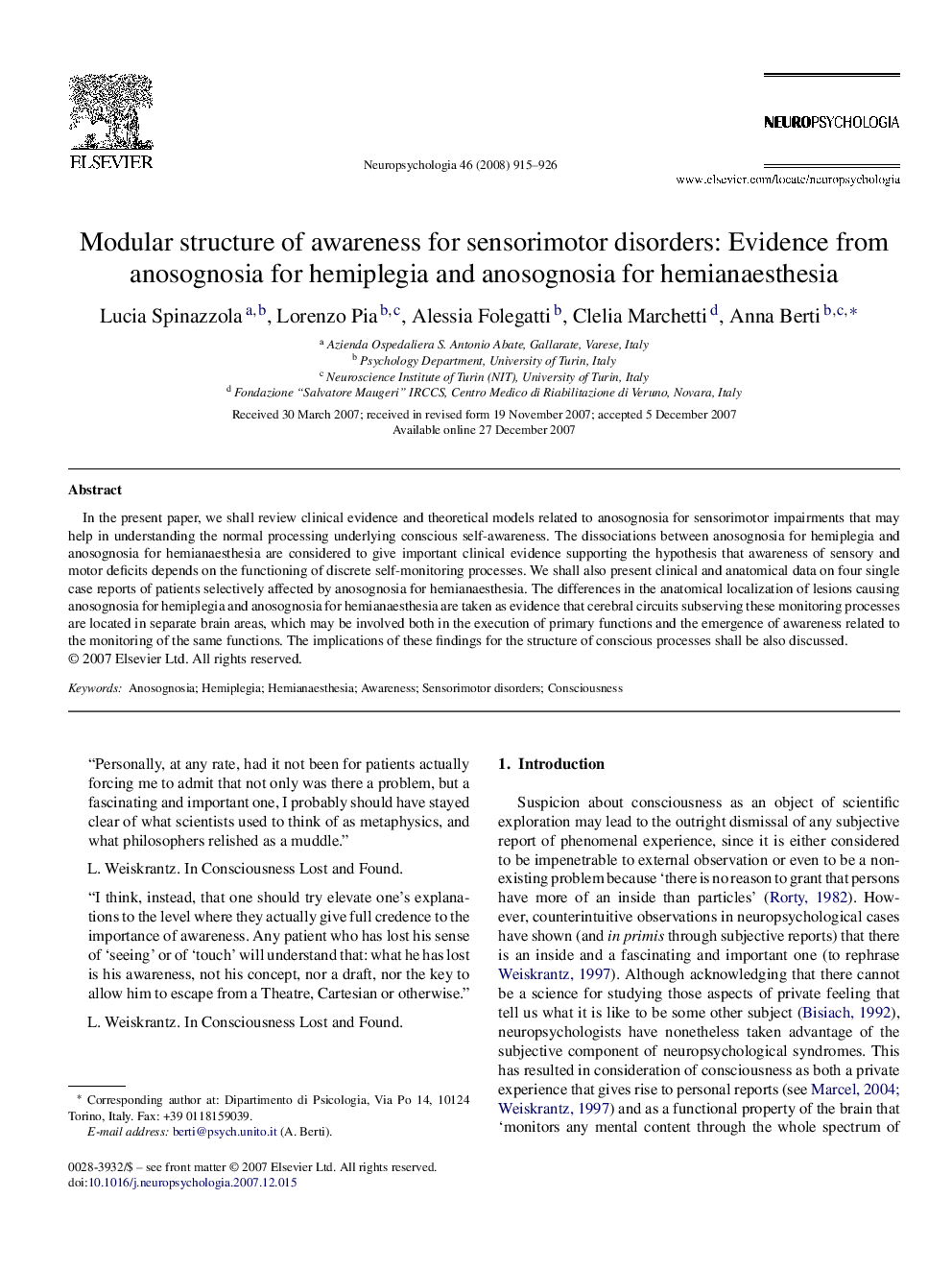| Article ID | Journal | Published Year | Pages | File Type |
|---|---|---|---|---|
| 945467 | Neuropsychologia | 2008 | 12 Pages |
In the present paper, we shall review clinical evidence and theoretical models related to anosognosia for sensorimotor impairments that may help in understanding the normal processing underlying conscious self-awareness. The dissociations between anosognosia for hemiplegia and anosognosia for hemianaesthesia are considered to give important clinical evidence supporting the hypothesis that awareness of sensory and motor deficits depends on the functioning of discrete self-monitoring processes. We shall also present clinical and anatomical data on four single case reports of patients selectively affected by anosognosia for hemianaesthesia. The differences in the anatomical localization of lesions causing anosognosia for hemiplegia and anosognosia for hemianaesthesia are taken as evidence that cerebral circuits subserving these monitoring processes are located in separate brain areas, which may be involved both in the execution of primary functions and the emergence of awareness related to the monitoring of the same functions. The implications of these findings for the structure of conscious processes shall be also discussed.
